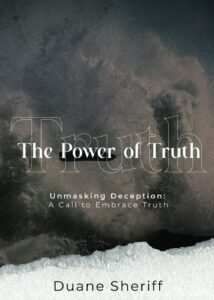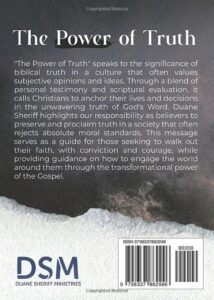There’s a fundamental pattern woven through the fabric of criminal law that often goes unexamined. At its core, nearly every criminal act involves a form of theft. Not just the obvious taking of property, but something far more profound—the unauthorized taking of what rightfully belongs to another person.

Beyond Property
When we think of theft, we typically envision shoplifting, burglary, or pickpocketing. But this narrow view obscures a deeper truth about the nature of harm itself. Every crime, when examined closely, involves the deprivation of something that belongs to the victim—whether tangible or intangible, physical or existential.
The Spectrum of Theft in Criminal Acts
Murder: The Ultimate Theft
Murder represents the most extreme form of theft—the taking of life itself. A murderer steals not just the victim’s present moment, but their entire future: every experience they would have had, every relationship they would have nurtured, every dream they would have pursued. They steal from the victim’s family and friends the presence of their loved one. They steal society’s potential benefit from that person’s contributions. Life is the most precious possession any individual has, and its theft is irreversible and absolute.
Sexual Assault: Theft of Bodily Autonomy
Sexual assault constitutes the theft of bodily autonomy and consent. Our bodies are our most intimate property—the one thing that should remain absolutely under our control. When someone violates this boundary, they steal the victim’s sense of safety, their agency over their own physical being, and often their peace of mind for years to come. They take something that can never be returned: the victim’s choice, their dignity, and their feeling of security in their own skin.
Kidnapping: Stealing Freedom
Kidnapping is the theft of liberty—one of humanity’s most cherished values. The kidnapper takes away a person’s freedom of movement, their connection to loved ones, and their ability to make choices about their own life. Time itself becomes stolen property, as hours or days that should have been the victim’s to spend as they chose are forcibly seized by another.
Fraud: The Theft of Trust
Fraud operates through the theft of truth and trust. The fraudster takes the victim’s money or resources, but they also steal something less tangible yet equally valuable: the victim’s ability to trust their own judgment. They steal the victim’s peace of mind and often their financial security. Fraud corrupts the social contract that allows commerce and human interaction to function smoothly.
Assault: Stealing Security
Physical assault steals a person’s sense of security and wellbeing. It takes away their physical integrity, leaving them injured and often traumatized. Even after physical wounds heal, assault victims may find that their confidence, their willingness to trust others, and their sense of safety in the world have been taken from them.
Arson: Theft Through Destruction
Arson doesn’t just damage property—it steals the sense of permanence and security that a home or building represents. It takes away shelter, possessions laden with memories, and the irreplaceable personal effects that tell the story of people’s lives. Beyond the material loss, arson steals the victim’s sense that their space in the world is inviolate.
Why This Framework Matters
Understanding crime through the lens of theft is more than an intellectual exercise—it has practical implications for how we think about justice, prevention, and rehabilitation.
Recognizing the True Cost of Crime
When we recognize that crimes steal more than just physical objects, we begin to understand why their effects ripple outward so powerfully. A burglar doesn’t just take a television; they take the homeowner’s sense of security. A cyber criminal doesn’t just steal data; they take privacy, trust, and often identity itself.
This perspective helps explain why victims often struggle long after the immediate crisis has passed. What was stolen cannot always be replaced, even when physical items are recovered or financial restitution is made. How do you return someone’s sense of safety? How do you restore time that was taken?
The Violation of Rights
At a deeper philosophical level, crimes as theft illuminate the concept of rights. Rights are essentially claims to certain things—life, liberty, property, security—that should be inviolable. Criminal acts violate these rights by taking what is protected. This framework helps us understand why society collectively punishes crime: it’s a violation of the fundamental agreement that certain things belong to each individual and cannot be taken without consequence.
The Moral Weight of Taking
Thinking about crime as theft also emphasizes the moral dimension of criminal acts. Theft implies that the perpetrator knew something belonged to someone else and took it anyway. There’s an inherent disregard for the victim’s humanity in this—a decision that the perpetrator’s desires matter more than the victim’s rights.
This applies whether we’re talking about taking someone’s wallet or taking their life. The thief makes a calculation that what they want to take is more important than the harm they cause. This selfish calculus is what makes theft, in all its forms, morally reprehensible.
The Path Forward
Recognizing theft as the common thread in criminal behavior offers insights into prevention and intervention:
Education and Empathy: Understanding that crimes steal irreplaceable things—time, security, autonomy, life itself—can help young people develop empathy and recognize the true cost of criminal behavior.
Victim-Centered Justice: This perspective reinforces the importance of victim-centered approaches to justice. When we understand what has been stolen, we can better address victims’ needs, whether that’s restitution, protection, or support services.
Holistic Rehabilitation: For offenders, recognizing the breadth of what they took from their victims can be part of accountability and rehabilitation. It’s not just about the immediate act, but about understanding the cascade of losses that resulted.
Conclusion
At the heart of civilized society is a simple principle: respect for what belongs to others. Whether that’s property, bodily autonomy, freedom, life itself, or any of the countless things that make us human, the principle remains the same.
When we violate this principle—when we take what isn’t ours to take—we commit theft in its truest sense. By recognizing this pattern across all criminal behavior, we gain a clearer understanding of why crime harms us individually and collectively, and why protecting against all forms of theft must remain a foundational priority for any just society.
Every act of crime diminishes the social fabric by suggesting that the sanctity of personal sovereignty can be violated. Every instance of justice reaffirms that what is yours—your life, your body, your freedom, your property, your security—cannot be taken without consequence. In this way, the fight against theft in all its forms is really the fight to preserve human dignity itself.
Hey there! We hope you love our fitness programs and the products we recommend. Just so you know, Symku Blog is reader-supported. When you buy through links on our site, we may earn an affiliate commission at no extra cost to you. It helps us keep the lights on. Thanks.
Disclaimer: The information provided in this discussion is for general informational and educational purposes only. It is not intended as medical or professional advice. Only a qualified health professional can determine what practices are suitable for your individual needs and abilities.


